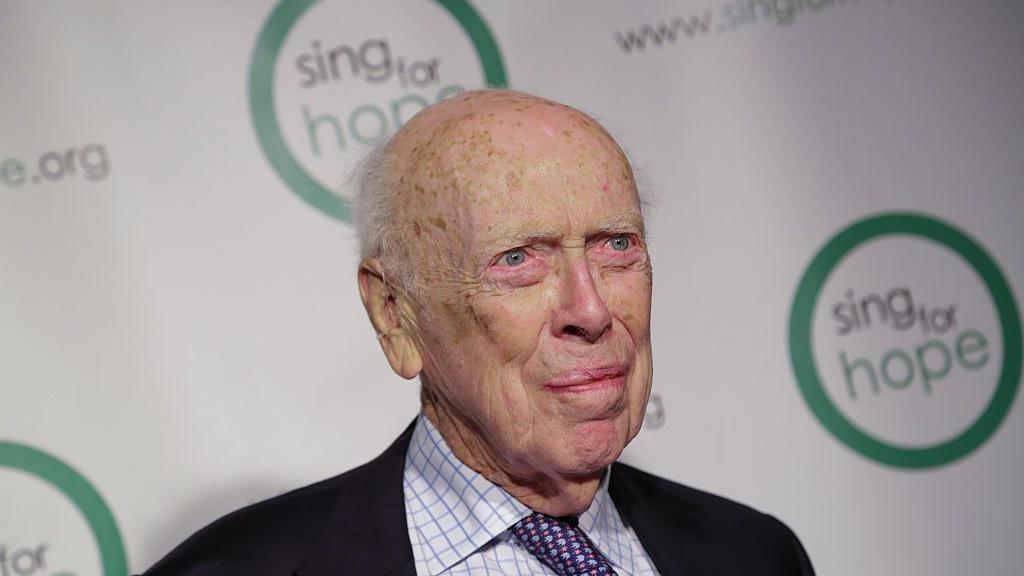DNA pioneer James Watson dies at 97

- Published
Nobel Prize-winning American scientist James Watson, one of the co-discoverers of the structure of DNA, has died aged 97.
In one of the greatest breakthroughs of the 20th century, he identified the double-helix structure of DNA in 1953 alongside a British scientist, Francis Crick, setting the stage for rapid advances in molecular biology.
But his reputation and standing were badly hurt by his comments on race and sex. In a TV programme, he made a reference to a disputed view that genes cause differences between blacks and white people on IQ tests.
The death of Watson was confirmed to the BBC by Cold Spring Harbor Laboratory, where he worked and researched for decades.
James Watson: Controversial discoverer of 'the secret of life'
- Published1 hour ago
Watson shared the Nobel in 1962 with Maurice Wilkins and Crick for the DNA's double helix structure discovery.
"We have discovered the secret of life," they said at the time.
Hs later comments on race led to him saying that he felt ostracised by the scientific community.
In 2007, the scientist, who once worked at the University of Cambridge's Cavendish Laboratory, told the Times newspaper that he was "inherently gloomy about the prospect of Africa", because "all our social policies are based on the fact that their intelligence is the same as ours - whereas all the testing says not really".
The comments led to him losing his job as chancellor at Cold Spring Harbor Laboratory in New York.
His additional comments in 2019 - when he once again suggested a link between race and intelligence - led the lab to strip his honorary titles of chancellor emeritus, Oliver R Grace professor emeritus and honorary trustee.
"Dr Watson's statements are reprehensible, unsupported by science," the laboratory said in a statement.
DNA was discovered in 1869, but researchers had yet to discover its structure, and it took until 1943 before scientists realised that DNA made up the genetic material in cells.
Working with images obtained by King's College researcher Rosalind Franklin, without her knowledge, Crick and Watson were able to construct a physical model of the molecule.
Watch: James Watson and Francis Crick awarded Nobel Prize in 1962
Watson sold his Nobel gold medal at auction for $4.8m (£3.6m) in 2014, saying he was letting go of the medal because he felt ostracised by the scientific community after his remarks on race.
A Russian billionaire bought it for $4.8m and promptly gave it back to him.
Watson was born in Chicago in April 1928 to Jean and James, descendants of English, Scottish and Irish settlers.
He won a scholarship to study at the University of Chicago at the age of 15.
There, he became interested in the new technique of diffraction, in which X-rays were bounced off atoms to reveal their inner structures.
To pursue his research into DNA structures, he went to Cambridge, where he met Crick, with whom he began constructing large-scale models of possible structures for DNA.
Later, after his scientific discovery, Watson and his wife, Elizabeth, moved to Harvard, where he became professor of biology. The couple had two sons - one of whom suffered from schizophrenia.
In 1968, he took over the Cold Spring Harbor Laboratory in New York State - an old institution which he was credited with turning into one of the world's foremost scientific research institutes.
Related topics
- Published13 January 2019

- Published1 hour ago
